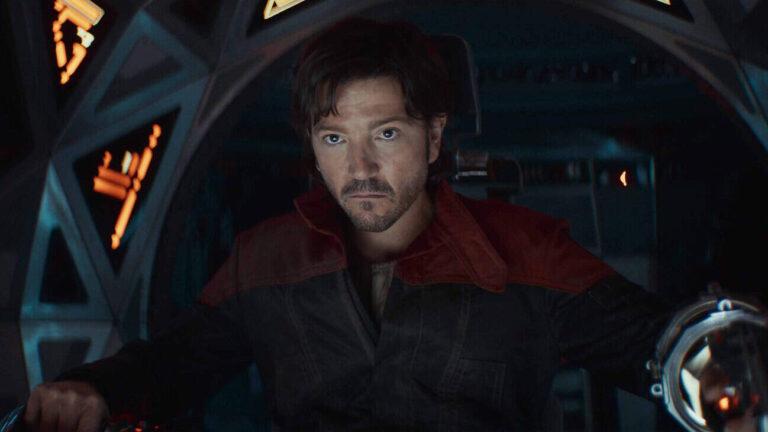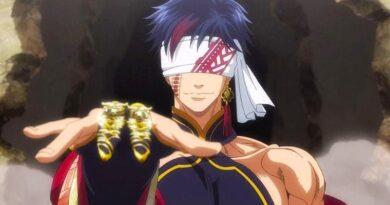
Andor Season 2 Episodes 1, 2, & 3 Review
‘Andor’ has finally returned to air after a lengthy break, with the first three episodes of its second and final season. And they prove that this show and the team behind it haven’t missed a beat. The first three episodes introduce audiences to what will be the driving forces of the season, all done with excellent writing, characterisation, set and costume design, and acting that allows ‘Andor’ to maintain its top level of quality.
The first three episodes of ‘Andor’ follow several different storylines across the main characters, so it makes sense to discuss them in turn across all three episodes. Cassian, the titular rebel, is tasked with stealing a TIE Avenger from Sienar Fleet Systems, and in so doing gives a very short but impactful speech to a defecting Imperial technician about the importance of rebelling, something that shows his current place. Cassian is committed.to the cause. A thrilling early action set piece is shown with his escape, which starts rather hilariously as Cassian was led to believe he’d be flying a different ship, and so wasn’t tried to be flying an Avenger.
He delivers it to the drop off location, only to be confronted by a different group of rebels who are distrustful of each other, to the point where a fight breaks out between them all. It shows how fractured the rebels are at the moment, as this group refuses to believe Cassian at every turn. It’s a vital fact to show, as over the course of the season the rebels will become more and more united, and they have to start from somewhere. As Cassian escapes, it’s revealed he was in fact on Yavin IV, which is a major location.
The current state of the rebellion is contrasted with the Empire, who are operating with a high degree of coordination. Krennic has organised a meeting of several bureaucrats to discuss the resources they need from Ghorman for the Emperor’s Energy Initiative – actually the Death Star -, which is a subtle reference to how the superweapon was disguised in the novel ‘Rogue One: Catalyst’. It’s chilling as Krennic discusses how he wants the different departments to work to displace people, strip mine the planet, and, engage in genocide if they need to. The two propaganda representatives present their false narrative they’re going to employ to justify, something audiences don’t get to see as much. The whole scene helps to show the methodical and calculated evil of the Empire, which is fascinating.
Dedra Meero, the ISB Agent, has some great moments in the three episodes, such as getting a dressing down by Major Partagaz for failing to find Axis and being forced to oversee Ghorman, but crucially her relationship with Syril Karn. The pair have moved in together, and host dinner for Syril’s mum. Over the course of the meal, Syril’s mother gives her son the usual grief, which leads to a funny image of Syril just flopping onto his bed out of stress. Dedra uses this opportunity to knock Syril’s mum down a peg, with her specific language which makes her lines stand out and fit her position. It would be something that would make Dedra a likeable character, if she wasn’t also a fascist.
On Chandrila, Mon Mothma is forced to navigate a complicated wedding. This is where some of the expansive sets shown off most prominently, allowing for director Ariel Kleiman to stage impressive long shots. This wedding is the highlight of the series, providing Mon Mothma with so much more depth, not just in the writing but also Genevieve O’Reilly’s performance, adding even more tragedy to Mon Mothma’s life. It all gets a bit too much for her, with her childhood friend betraying her out of nowhere, Luthen implying and then killing that same childhood friend to “protect” Mon, her daughter being married to a child, and most fatelly her daughter’s rejection of Mon’s olive branch. It gives a look at the loss Mon has suffered, the cost of rebellion. By the end, she drowns her sorrows in alcohol, and raves to an awesome new mix of the Niamos theme. It’s saddening, but extremely well told.
While the story involving Bix, Brasso and Wilmon Paak on the farm planet Mina-Rau isn’t as interesting as the others, as they all try and evade Imperial capture, it does have a lot to say about undocumented workers (salient in the current political landscape), and abuse of power. It takes ‘Star Wars’ to a very adult place, one that is handled with great care thanks to tony gilroy’s impressive writing and ends with Bix ultimately regaining her autonomy. Brasso’s death hit hard, especially as he was a core character, but it showed how sometimes the end can be unceremonious. It’s an important story to tell, but is overshadowed by everything else that happens in the other storylines.
Overall, the first three episodes of season two fo ‘Andor’ set the tone and themes for what audiences can expect going forward from the series. It’s a ruthless and dark take on a galaxy far far away, punctuated with some small moments of levity. Gilroy’s writing continues to be masterful, with surprising twists and turns but importantly something to say about reality. All the actors bring their A-game, with production and costume design that truly is out of this galaxy. These three episodes will make audiences hungry for more.



